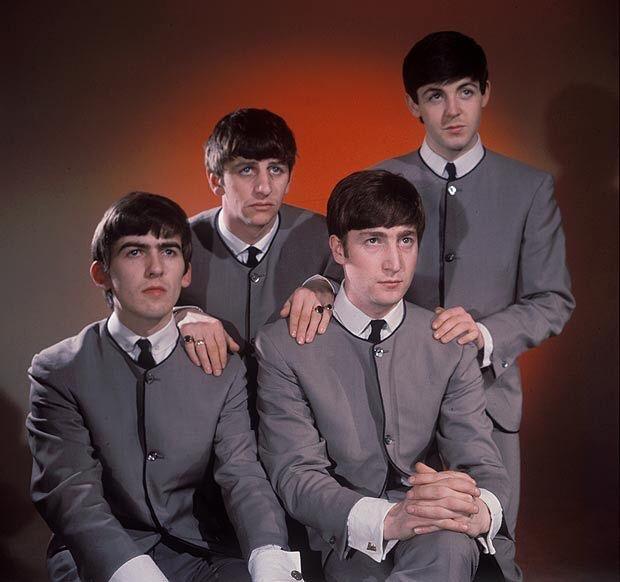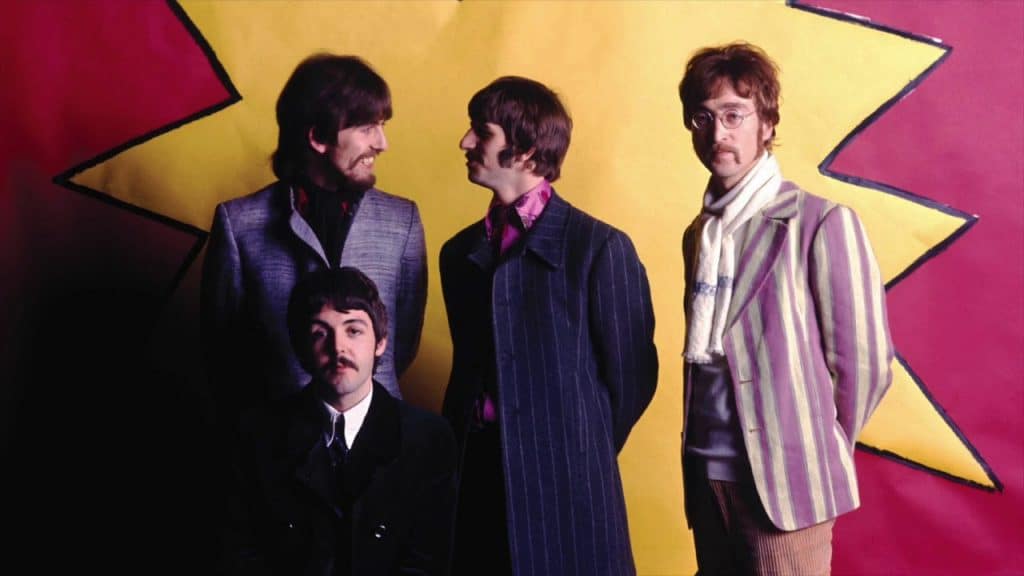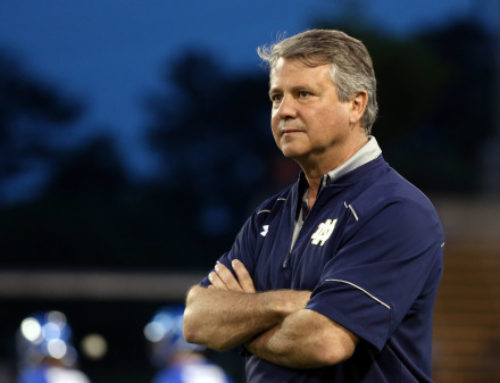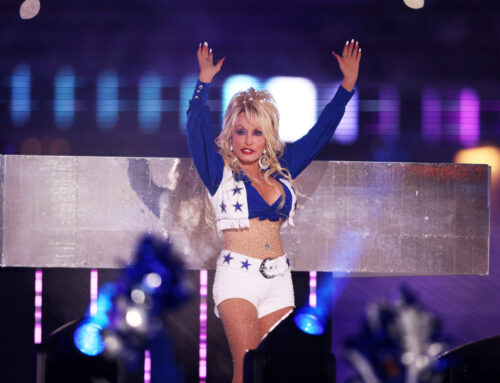The greatest musical artists of all-time made mistakes. No, I’m not talking about the intrusion of Yoko Ono or the decision to spend 8 minutes and 22 seconds of precious Beatles record space with “Revolution 9.” Those are both low-hanging fruit that everyone talks about. I’ve got other more intriguing things to talk about.
As someone who has been obsessed with the Beatles since 1994 I’ve been accumulating little things about the band that have bothered me or made me wonder how could they have missed that opportunity? Obviously, the Beatles did nearly everything right…but there were some exceptions. This comes from love.
The Collarless Suits
One of the biggest impacts for the Beatles were their sense of fashion and setting trends. When they signed with their manager Brian Epstein in January 1962 they were far from the clean-cut band the world was introduced to in the years which followed.
However, by early 1963 the band began wearing these matching gray mohair and silk collarless suits as their fame increased throughout England.
This look came to define the Beatles initial explosion on to the scene in England–and since they took so many publicity shots in the suits throughout 1963–these outfits carried over into the Beatlemania that blossomed in early 1964 within the United States. For example, their U.S. release of “I Want to Hold Your Hand” on Capitol Records on December 26, 1963 features the band in the collarless suits.

No one looks good in a collarless suit.
Luckily, the band dropped the look by late ’63 and went with more traditional suits for their Royal Variety Performance in London on November 4, 1963 in their official media breakout gig in their home country. Thank goodness, because these suits are dreadful no matter how nostalgic they make folks for that era.
Opening the Ed Sullivan Show with “All My Loving”
On February 9, 1964 when the Beatles performed on the CBS Ed Sullivan Show and changed the music industry forever they somehow decided to open their first set of 3 songs with the quick-tempo ballad “All My Loving.”
I thought it’s always been a huge missed opportunity that they didn’t explode into “I Want to Hold Your Hand” given that song’s powerful intro. So, why didn’t they? I have 3 guesses:
1) They were probably asked to play “IWTHYH” last for ratings purposes.
2) They might have thought a softer song was a better introduction for a portion of America’s curious viewers.
3) I think John Lennon wanted nothing to do with vocals for the first song. Also, his mic was curiously turned down low on the show.
The Buried Rhythm Guitar on “I Feel Fine”
If you’re a production and engineering nerd in addition to a Beatles nerd you’ll know there are hundreds of examples of the group struggling with the technology of the time. For their November 1964 single “I Feel Fine” they were on 4-track tapes, truly ancient stuff.
Occasionally, an instrument would get lost during the mixing process. Whether it was the mono or stereo mix the pretty rhythm guitar on this track was virtually compressed and barely audible. The 2015 remastered version cleans it up a lot, thankfully.
Isolated guitars open up the rhythm guitar work.
This YouTube video does a nice job of showing both guitar parts.
Not Advertising Beatles for Sale Differently
Released on December 4, 1964 in England only* the Beatles for Sale album has always been an interesting blip on the Beatles’ historic radar. It was called the “war weary” album after 4 hard years of touring as the strain of Beatlemania finally caught up with the band.
*The Beatles had one record label (Parlophone) in England and one in the US (Capitol) and they didn’t begin releasing the same albums together until 1966. I always refer to their British releases here.
The album is certainly not among their best–in fact it usually ranks toward the bottom of their catalog–but it could’ve been advertised and packaged a lot better. The album introduced a much more introspective tone for the band and in some ways was a tremor ahead of Rubber Soul, except with 6 tracks that were covers. Change the cover, change the album title, and this one could have a much different vibe.
The Solo on “Mr. Moonlight”
This Roy Lee Johnson cover from the aforementioned Beatles for Sale record is typically near the bottom of the Beatles’ catalog in terms of popularity. Although, I will vouch for a tremendous vocal intro by John Lennon and one of the more crisp harmonies from the group.
Many just can’t get past the Hammond organ solo, performed by Paul McCartney.
Go to 1:25 for the organ solo.
Yeah, it’s bad. Maybe just 5 notes in total? It kind of symbolizes how hurried the recordings were for this album and that no one bothered trying to improve this part of the song.
Ending Help! with “Dizzy Miss Lizzy”
The Beatles first two albums featured covers at the end, then their 4th album did too. By the time they arrived with Help! in the summer of 1965 they were far too progressed as songwriters to finish another album with a cover.
Plus, this is in the running as one of the worst Beatles’ songs ever recorded. It’s certainly uninspired and really boring. Side two of Help! might be the worst side to a record the group would record.
The E7♭9 Chord on “I Want to Tell You”
Revolver was a mini-breakthrough for George Harrison who was able to get 3 of his songs on the album, including leading the LP off with his acerbic “Taxman” one of the Beatles many lasting legacies.
However, Harrison’s “I Want to Tell You” is probably the weakest song on an admittedly loaded album. It’s not the inherent weakness that bothers me but it’s the dissonance throughout the song as heard most jarringly with the absolutely scorching E7♭9 chord from McCartney on piano.
That chord is hammered in the same spot on all verses throughout the song. You can listen to it a few seconds into this Spotify preview, it’s impossible to miss. Some people love the dissonance of this song, but especially after the 2009 remaster when the chord was even more biting it ruins things for me.
“I Am the Walrus” Not the A-side Single
Look, I’m going to stan for Paul McCartney forever and there’s certainly plenty to be said about “Hello, Goodbye” being the more catchy song fit for the top spot on a single. However, “I Am the Walrus” may be the greatest song ever recorded in rock history and looking back it should’ve been an A-side.
Say what you want about the Magical Mystery Tour movie at least it brought us the Walrus music video.
Keeping Singles Off Albums
The Beatles kept about half of their singles off their albums, a common move for the time and something that has made a resurgence in the streaming era. However, when you’re packaging your entire catalog for listeners decades into the future it’s a lot easier to put things on albums. Plus, you know, the albums would’ve been even better.
Here are where those #1 singles (or major hits) could’ve landed on albums:
“From Me to You” on Please Please Me, “She Loves You” and “I Want to Hold Your Hand” on With the Beatles, “I Feel Fine” on Beatles for Sale, “We Can Work it Out” and “Day Tripper” on Rubber Soul, “Paperback Writer” and “Rain” on Revolver, plus “Lady Madonna” and “Hey Jude on the White Album.
We could also add “Penny Lane” and “Strawberry Fields Forever” to Sgt. Pepper’s Lonely Hearts Club Band even though they were tacked on to the EP Magical Mystery Tour which later became a canon ‘studio’ album.
Direct Injection on “Revolution”
The Beatles recorded 3 separate versions of “Revolution” the first being the slow bluesy “Revolution 1” released on their self-titled album, the second horrific sound collage “Revolution 9” released on the same album, and “Revolution” recorded last but released as a single months before their album.
The single version is a hard-rocking classic known for its aggressiveness and proto-metal punch thanks to fuzz-blasting guitars that used a pioneering (and dangerous) engineering tactic during recording:
Sound engineer Geoff Emerick sent a direct injection of the guitars into the mixing console by routing the signal through two microphone pre-amplifiers with heavy distortion and overload.
The result was an iconic sound.
Here’s where a history less on mono vs. stereo mixing is needed. As most people had a one-speaker record player in the 1960’s the Beatles prioritized mono mixes and the original summer of 1968 single of “Revolution” was released in this format. What you hear above from YouTube is a remastered version of the stereo mix released in February 1970 on the Hey Jude compilation.
I prefer stereo because that’s what I grew up listening to, although there are a lot of really bad stereo mixes out there. The mono mix for “Revolution” (not available online) is generally accepted to be superior but neither mix produced a quality guitar sound in terms of clarity.
Of course, you could say this was the point of the direct injection to get a dirty sound. Yet, in both mixes the guitars overlap each other into one garbled noise that sounds awful in stereo. Fans have been wanting a new 5.1 Dolby Digital surround-sound mix and the closest we’ve come is the Love soundtrack version which is so much better. Some would argue it’s not as biting but I prefer this separation.
Waiting to Nurture George Harrison as a Songwriter
By all accounts pretty much nothing would’ve saved the Beatles from breaking up (not even Yoko) and Harrison was the most vocal internally about being “done” being in the group due to the excess of celebrity and touring. When the group was finishing their second-to-last ever tour and Beatlemania began to subdue following 5 albums, Harrison had only 3 original compositions to his name on records.
Now, competing with the Lennon-McCartney partnership was a near impossible task. Yet, both of those prolific songwriters have admitted they purposely shied away from helping Harrison and that effectively forced him to peak as an artist right when the band were breaking up.
Leaving “Not Guilty” Off the White Album
This one has always hurt. The Beatles worked on this song just about as much as any othertune during the White Album sessions and ultimately it didn’t make the cut.
That decision was reportedly from the songwriter George Harrison himself who pulled it out and didn’t release it until his self-titled album over a decade later. Still, it’s amazing that across nearly 94 minutes of record time the group couldn’t figure out a way to include this gem.
Not Releasing the White Album As a Single Album
Here we are! There are two types of Beatles fans, those who love and enjoy the self-titled The Beatles and those who think the group missed an opportunity to release a less watered down album in 1968. I have a theory about reactions coinciding with the age of listeners.
If you were alive at the time, the group was coming off a long break with only the single “Lady Madonna” coming in between the release of Magical Mystery Tour in November 1967 and the summer of 1968. Then, the group dropped the Yellow Submarine movie in July ’68, the “Hey Jude”/”Revolution” single in August and followed that up with a double LP 3 months later. If you experienced it as it happened I can imagine it was awesome.
If you were like me and ingested the group through the television documentary The Beatles Anthology you were hammered over the head with the fact that the White Album was a divisive recording that all but sealed the band’s fate of breaking up. When you see the fluff included on the album, it makes it easier to wish it was shorter.
If I were to make cuts I’d do it in this order:
“Revolution 9” (8:15)
“Revolution 1” (4:15)
“Wild Honey Pie” (0:52)
“I’m So Tired” (2:03)
“Why Don’t We Do It in the Road?” (1:41)
“Julia” (2:57)
“Honey Pie” (2:41)
“Don’t Pass Me By” (3:51)
“The Continuing Story of Bungalow Bill” (3:14)
“Piggies” (2:04)
“Martha My Dear” (2:28)
This removes 34:21 from the album and leaves this 59:12 album:
“Back in the USSR”
“Dear Prudence”
“Glass Onion”
“Ob-La-Di, Ob-La-Da”
“While My Guitar Gently Weeps”
“Happiness is a Warm Gun”
“Blackbird”
“Rocky Racoon”
“I Will”
“Birthday”
“Yer Blues”
“Mother Nature’s Son”
“Sexy Sadie”
“Helter Skelter”
“Long, Long, Long”
“Savoy Truffle”
“Cry Baby Cry”
“Good Night”
Making Yellow Submarine With Little Effort
The Beatles were contractually obligated to provide a third movie for United Artists and did so by commissioning an animated feature in which they didn’t even provide voices for their own characters. Now, the movie is fine and it’s generally well liked by most people but the group also mailed in the soundtrack, too.
They provided 3 average songs at best for their talents, plus the Lennon scorcher “Hey Bulldog”, then included two previously released songs before producer George Martin added an 18-minute score on the back half of the soundtrack. This isn’t a big deal, except Yellow Submarine became part of the Beatles album canon and it kind of sucks.
Releasing Let It Be
Saving the best for last? The short story to Let It Be is that the group started it as a project in early 1969, fought endlessly during recording, shelved it, recorded Abbey Road, then eventually brought in Phil Spector into 1970 amidst group squabbling and legal battles to mix and produce what would become their studio final album.
It didn’t need to be released.
The album is highlighted by 3 mega-songs in “Don’t Let Me Down”, “Let It Be”, and “Get Back” each of which were released as singles weeks before the LP was released. Another song “Across the Universe” was released even earlier leaving the world a hodge-podge of mediocre songs that effectively spoiled the perfect ending from Abbey Road. By orders of magnitude this is the album I’ve listened to the least from the Beatles.





Their facial hair choices have to be in the #16-20 neighborhood
Not any such list from me, are you crazy?
How does the word “Michelle” not show up in this article?
Hey that’s how I learned French
Not a fan?
It’s solidly in contention for worst Beatles song, and basically singlehandedly keeps Rubber Soul from being the best Beatles album. Other than that it’s great!
Most lists I’ve ever seen have “Michelle” about average to above average rated for their songs.
Lennon’s classical guitar, one of the first songs with Paul on his Rickenbacker bass playing a sneaky melodic line, and that Harrison lead guitar on a Fender Stratocaster….it’s all great. Really good vocal performance from McCartney and solid harmonizing from the others.
Is it just the French then?
“Wait” and “Run For Your Life” are the clear worst tracks on Rubber Soul, FWIW.
Nary a false note. Heck of a delight to see each and every one of these timeless faux pas nailed to the wall.
Two personal notes:
(1) yes, indeed, the ’68 transition was truly something to experience. But so damn much was going on that year that it was kind of a momentous back drop. Hard to believe in retrospect.
(2) September of 1964 was quite the month: On September 3rd, I saw the Fab Four at the Indianapolis State Fair grounds. I went with the guy who became the lead guitar for one of ND’s first true r&b bands (Nobody’s Children which became Savage Rose, from Farley Hall, see the link below). Three weeks later we beat Wisconsin 31 to 7, in Ara’s first game. The two were definitely linked (even though Beatles songs are very hard to cover, so our band was more directly influenced by the Stones and Animals) — both ND Ara-era football and the Beatles signaled brand new completely out of the galaxy epochal seismic moves.
https://wendy-city.blogspot.com/2019/09/nobodys-childrensavage-rose66-68-notre.html
That’s a great story!
Hey Eric, I know I used to bust on you about the Beatles at the other site, but that was just to see if I could get you going. I actually do like quite a bit of their music.
Back in 1965 my fiance and I were married in September of that year, we were both 25 years old. She loved the Beatles and for her wedding to be party, whatever a woman’s bachelor party is called, her girlfriends took her to Shea in August to see the Beatles. When she got home she told me that it was a phenomenon, never saw anything like the hysteria from all the young fans, that the Beatles would surpass Elvis is greatness, said someday they will be in the Smithsonian. Whenever she bought a Beatles album she bought two, one to play and one to keep as a collectors item. She had every album the Beatles made in duplicate. When they broke up that’s when she stopped buying any of their music since they weren’t the Beatles anymore.
Upon her passing in 1995 I gave both her opened and sealed albums to my daughter and told her to keep them in the family and to pass them on to her daughter when shes old enough to appreciate them.
That’s really touching!
It sure is, a lovely story, thanks for sharing, Monsieur Rubin. Good for her — and you .
Funny, that same year in ’65, the Irish played Army in Shea.
I made the trip, and the top songs I remember walking the streets of NYC for the first time were Yesterday (I think it was #1), a very electric Bob Dylan with Positively 4th Street, and my boys with Get Off My Cloud sung to the Army team, which we beat like 17-zip, Army’s All-American middle guard got hurt and Ara ran it up the middle with our fullback like 12 straight times.,
My hot take: The Beatles is a terrible band name, and they’re just so iconic that nobody notices. It’s a lame pun, and there’s nothing about beetles that suggests good music.
Hoobastank is a terrible band name, but there are many better than the Beatles.
Additionally, Captain Skeetch and the Shrimp Shack Shooters is a terrible name, but The Oneders is great.
Whether I agree with all this or not, I admire the detail and the many hot takes here. It’s a great read and a courageous piece.
But man I can’t get with cutting the White album. It’s sprawling ambition and wild eclecticism were kind of the point. But leaving off I’m So Tired, Martha My Dear, and/or Julia would be criminal. No!!
Does my theory hold true, were you alive and listening when it was released?
I truly think they all had too many songs in their personal collections from the post-Pepper months and that they should’ve trimmed the fat. At least, break things up into two separate albums. I think even Harrison said after its release it was too much and he didn’t listen to the whole thing anymore.
Ha I remember buying the record the day it came out. I’m really really old.
I’d have included the goofy Sgt pepper get ups. Though the rest of the album cover was cool.
And everything about The Long and Winding Road was a horrible mistake. It proved to me that they were no longer a band as there was a time Lennon would have salvaged that shite or just mocked McCartney so mercilessly that he’d have dropped it.
I can’t be more with you about The Long and Winding Road. I debated adding it on its own but lumped it in with the album. I think it’s by far my least favorite McCartney song.
Strategically, it made no sense adding it to the album when Let It Be (the song) was already on there. I think it’s also partly why the album is so aggressively melancholy and depressing to me.
The Long and Winding Road is a nice but fairly sappy McCartney song. It is completely done in by being overproduced. The strings, the choir – it just takes everything bad about the song and turns it to 11. The version from Let It Be…Naked is markedly better, though still admittedly not great
Hey, Eric. Nice points. I agree with you on the White Album. I was just talking to my friend the other day and agreeing that there’s enough material for one really good single album, or one really uneven double album. Also agree that leaving “Not Guilty” off that album was a mistake, and that jarring dissonant chord in “I Want to Tell You” is the worst. Enjoying the music discussions and looking forward to the next post
Good stuff!
It is nice to read an article that agrees with me about I am the Walrus being a better single and perhaps the Beatles best song. Cheers.
Why don’t we do it in the Road needs to stay in! (But perhaps on another album, a fun Beatles alt album)